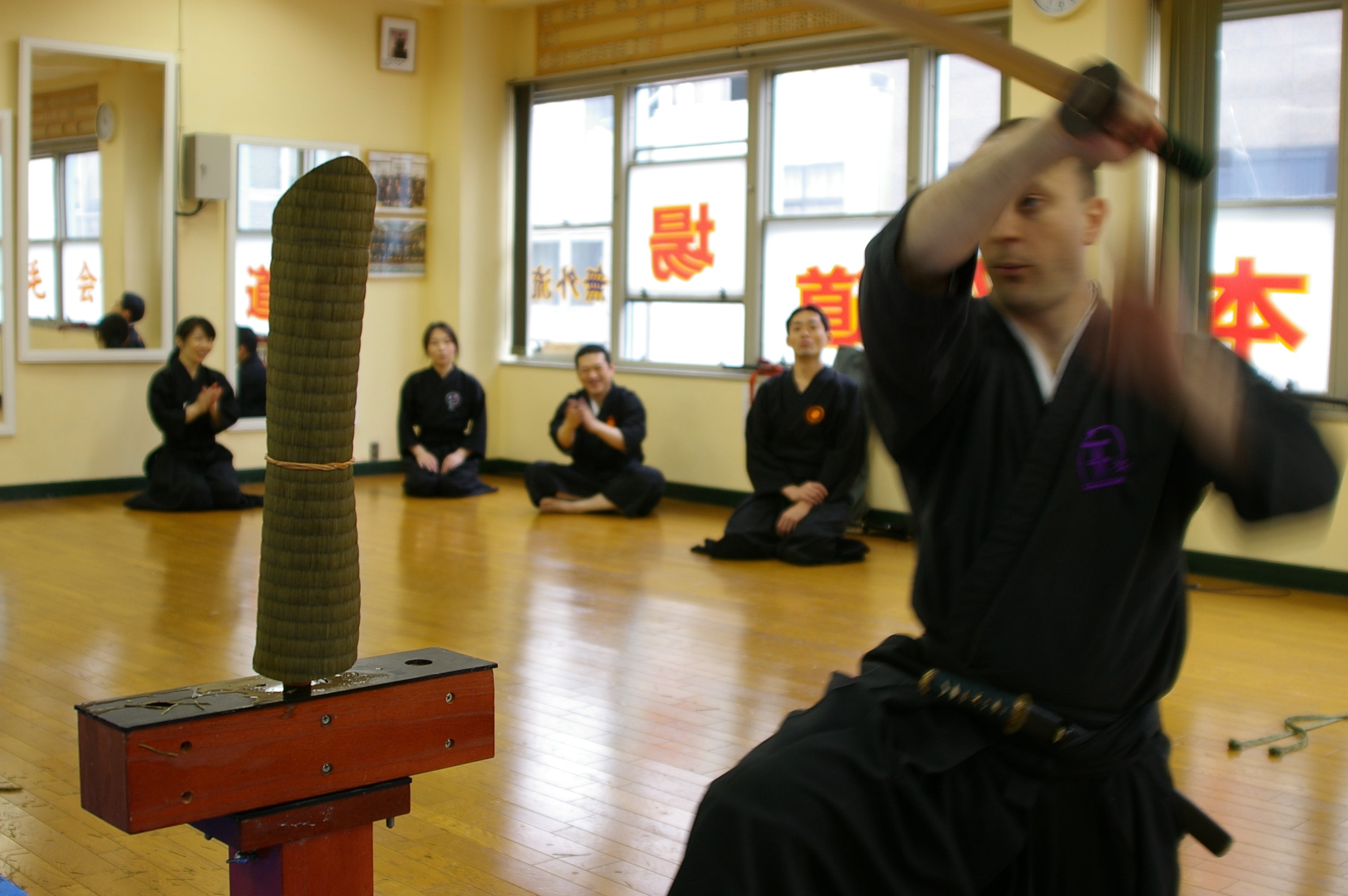Your Cart is Empty


Japan has a long history of swordmaking dating back to the country's jokoto period. It paved the way for some of the world's most prolific swords, including the katana. Without Japan's art of swordmaking, the katana and other high-quality blades may not have been invented. But Japan has also pioneered the art of swordsmanship, and one of the ways it's accomplished this is through the tameshigiri.
What Is Tameshigiri?
Some people assume that tameshigiri is just another form of Japanese swordsmanship like kenjutsu, but this isn't necessarily true. It's actually the practice of test cutting. In fact, tameshigiri literally means "test cut." As shown in the photo above, it involves striking and cutting targets with a sword.
Tameshigiri allows practitioners of martial arts to test their cutting abilities on a target. Unlike conventional forms of swordsmanship where two practitioners spar with each other, tameshigiri uses a real sword with a live blade. Because the attacks are directed at practice targets instead of other practitioners, there's little to no risk of injury.
Origins of Tameshigiri
Tameshigiri has origins dating back to Japan's Edo period, during which swordsmiths would hand over their newly created swords to samurai warriors so that they could test the blade's cutting ability. Swordsmiths themselves weren't always adept at using swords, so they designated this task to samurai warriors. The samurai warrior would use the swordsmith's sword to cut various test targets, including rice straw, goza, bamboo and thin sheets of steel. If the sword failed to cut cleanly through the material, it was considered a dud and given back to the swordsmith for modifications.
When performing tameshigiri on test targets, samurai warriors would perform a variety of cuts. Reports show that some of the most common cutting styles performed during traditional tameshigiri included downward diagonal, upward diagonal, horizontal and straight downward.
Tameshigiri Today
While tameshigiri is no generally no longer used to test the performance or quality of new swords, it's still performed by swordmanship practitioners today. The key difference between traditional and modern tameshigiri lies in its purpose. In feudal Japan, it was done to test the sword's ability. Now, however, tameshigiri is performed to test the swordsmans's ability.
The test targets of tameshigiri have also changed over the years. Now, for instance, rolled tatami omote is the most common material used to create targets. The tatami is rolled into a tune-like shape, and in some cases, soaked with water to make it denser and more difficult to cut through.